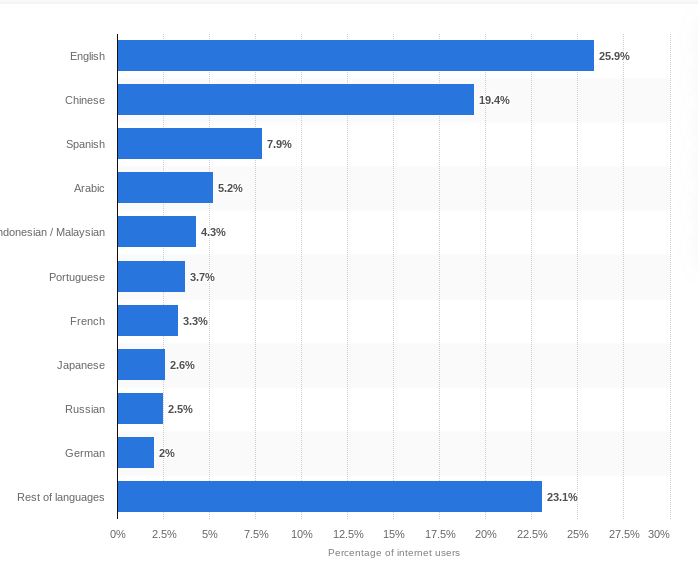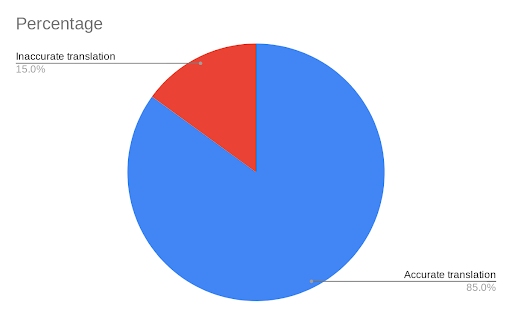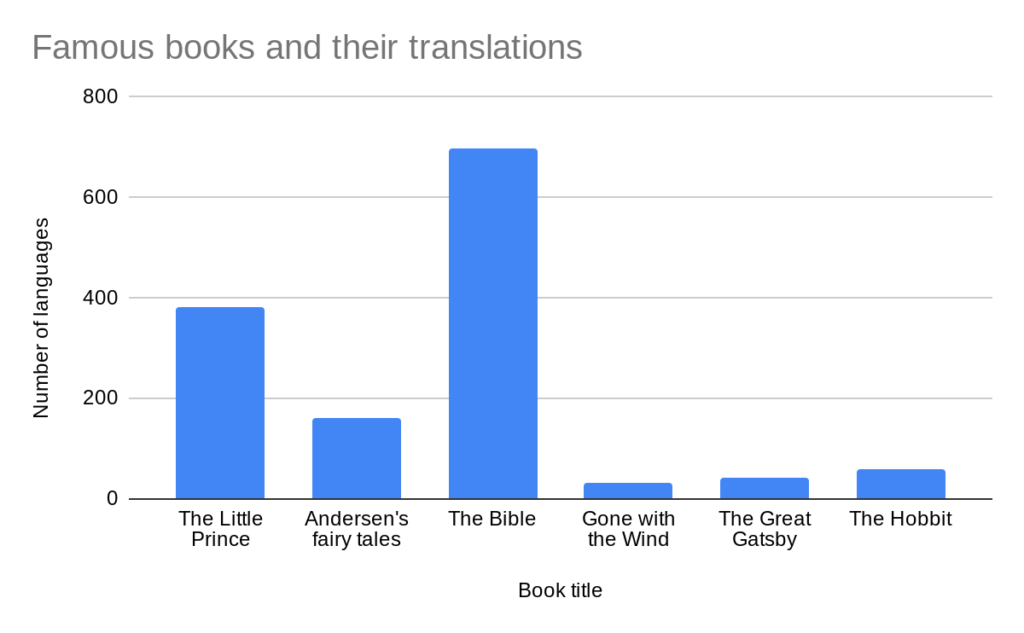SEO optimization is about making sure you’re improving your website’s performance as much as you can. When you bring multiple languages into the equation, you’re giving your site the chance to reach more audiences, and thereby perform better internationally.
The power of multilingual SEO is something many website owners and managers underestimate. Considering that only about one-quarter of all websites on the internet are written in English, it becomes clear that placing more emphasis on multilingual pages has immense potential to expand a website’s reach and influence.

Source: Statista.com
So which steps would one need to take to optimize their website for multilingual SEO? In short, there are four key things you’ll want to make sure you’re doing. Those four are outlined and explained below.
1. Understand your target language(s)
No matter which languages you’re planning to work with, it’s crucial that at least a portion of your team are deeply familiar with those languages.
In all likelihood, you’ll be creating content in one language and then translating it into another (or multiple others). This is more efficient than having two writers put together an article on the same topic in their respective languages. It also allows for easier comparisons to be made between the two versions of a given piece.
When you create multilingual content this way, you must involve native speakers of any languages you’ll be translating into. Popular software is far from infallible – translation accuracy for Google Translate, for example, only goes up to 85%. Even then, this is only true for the most popular language pairs: French-English and Spanish-English.

Google Translate (and similar software) is also built around the idea of providing users with ‘transliterations’. In other words, the aim of these services is to take a word, phrase, or sentence and convert it into another language word-for-word. As you can imagine, these extremely literal translations often miss their mark.
When it comes to SEO optimization, you can’t afford to waste space with nonsense translations or phrases that only make sense in their original language. Your goal should be to create two versions of the same page that both hit their SEO optimization targets, not to force the translated version to use the exact same phrases as the original.
To put it a different way, you’ll want to localize content instead of transliterating it. Localization ensures the content connects with target audiences in other parts of the world, or in other languages, even when the literal meaning has to be tweaked. This way, you’ll create a site that makes genuine sense across languages, while being able to more easily incorporate SEO keywords and phrases.
[Case Study] Driving growth in new markets with on-page SEO
2. Use the right tools
One part of crafting a strong multilingual SEO strategy is choosing the correct tools for the job. For example, using a business intelligence app can tell you which translations of your website are getting the most views. You can then use that data to help you decide how to invest your resources. If a lot of your website’s visits are coming from Sweden, for example, you might want to make sure that as much of your content has a Swedish version available as possible.
Likewise, you’ve got to ensure you’re using the right tools to analyze the SEO of your pieces across the languages you offer them in. Let’s look at an example. If your pieces are doing very well in the search results of Google.nl, but those same pieces don’t show up on the first page of Google.de, then your German translation team needs to take notes from the Dutch team.
You can only optimize your SEO score if you know which factors need improvement. This is true no matter which language you’re looking at.
3. Create content that translates well
Not all content is equally fit for translation. Consider the below graph illustrating the number of languages some famous works have been translated into:
As you can see, there’s a massive discrepancy in the total number of translations each of these works has. This graph goes some way to show that the Bible is significantly more suited to translation than classic works of fiction like Gone with the Wind or The Great Gatsby.
The same principle applies to website content. For example, the phrase ‘team design software’ communicates a clear message in English. But does it do the same in Japanese, Swahili, and/or Norwegian? In any of those languages, the phrase might have to become ‘design software for teams’, ‘software for team design’, or a rephrasing that might not seem coherent in English.
As you’re creating your multilingual website with SEO optimization as your goal, you’ve got to keep these things in mind.
4. Diversify
One of the best ways to ensure your website will be effective in many different languages is to diversify your teams. For example, if your website exists to provide customer service advice, you’ll want to make sure the customer service team that’s providing the necessary expertise for your site is full of people from all over the world, with many different mother tongues.

Source: Pexels
That way, you’ll have a much better chance of coming up with headlines and topics that translate well.
Things to keep in mind
Multilingual SEO is, above all else, a way to make your website more appealing to a broader audience.
With that in mind, you’ll want to be certain your multilingual website is equally attractive in all the languages you offer access to it in. If the English version is significantly more SEO optimized than, say, the Chinese version, you’ll be driving Chinese speakers to the English version and essentially asking them to fill in any language gaps using Google Translate. This leads to miscommunications and mistranslations.
The idea is to ensure you’ve got excellent-quality translations available. Using great tools helps you create these. Having a solid grasp on the target audiences in each country you’re marketing to also helps.
When your teams are diverse and, as a result, your topics are well-suited to translation, everything else falls into place more easily. That’s why you’ll want to ensure you’ve got native speakers of any languages you’ll be translating into on your teams.


